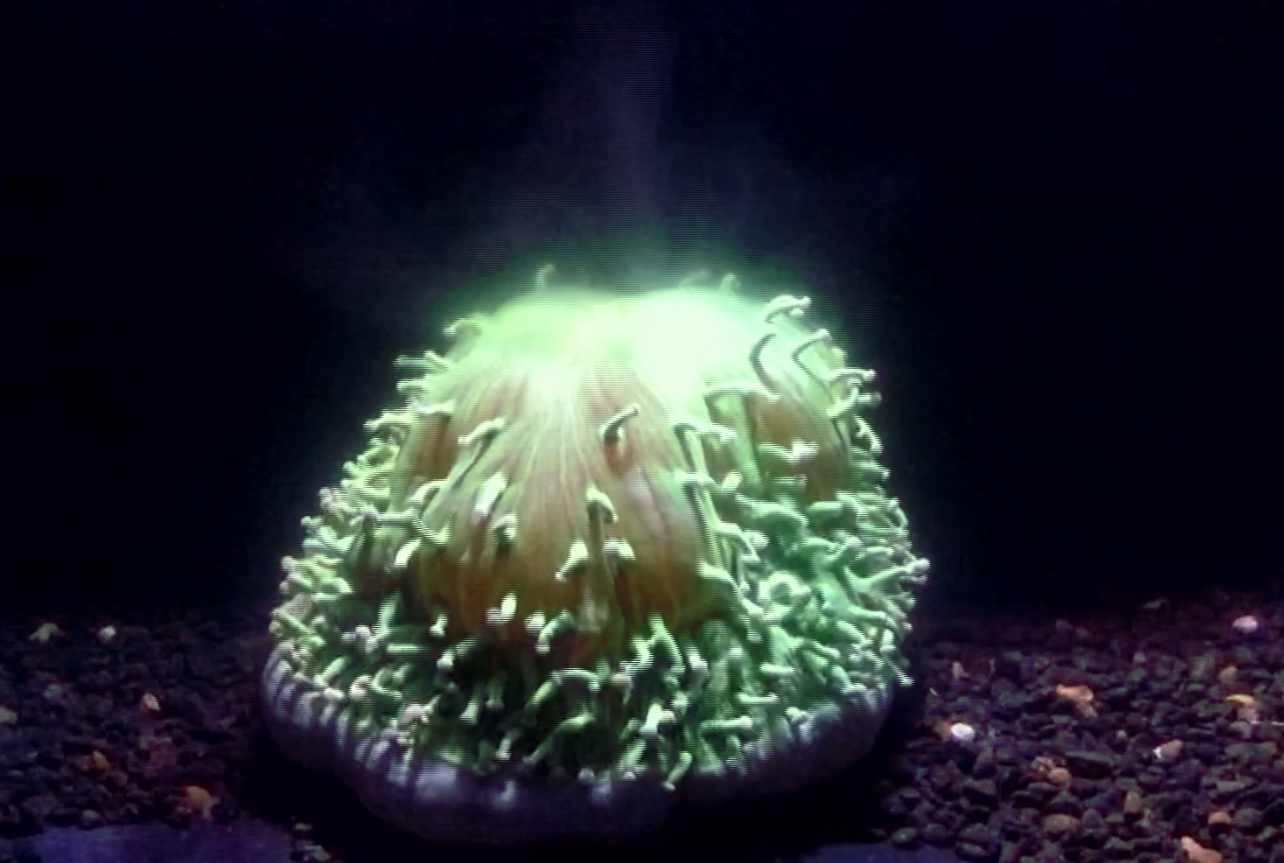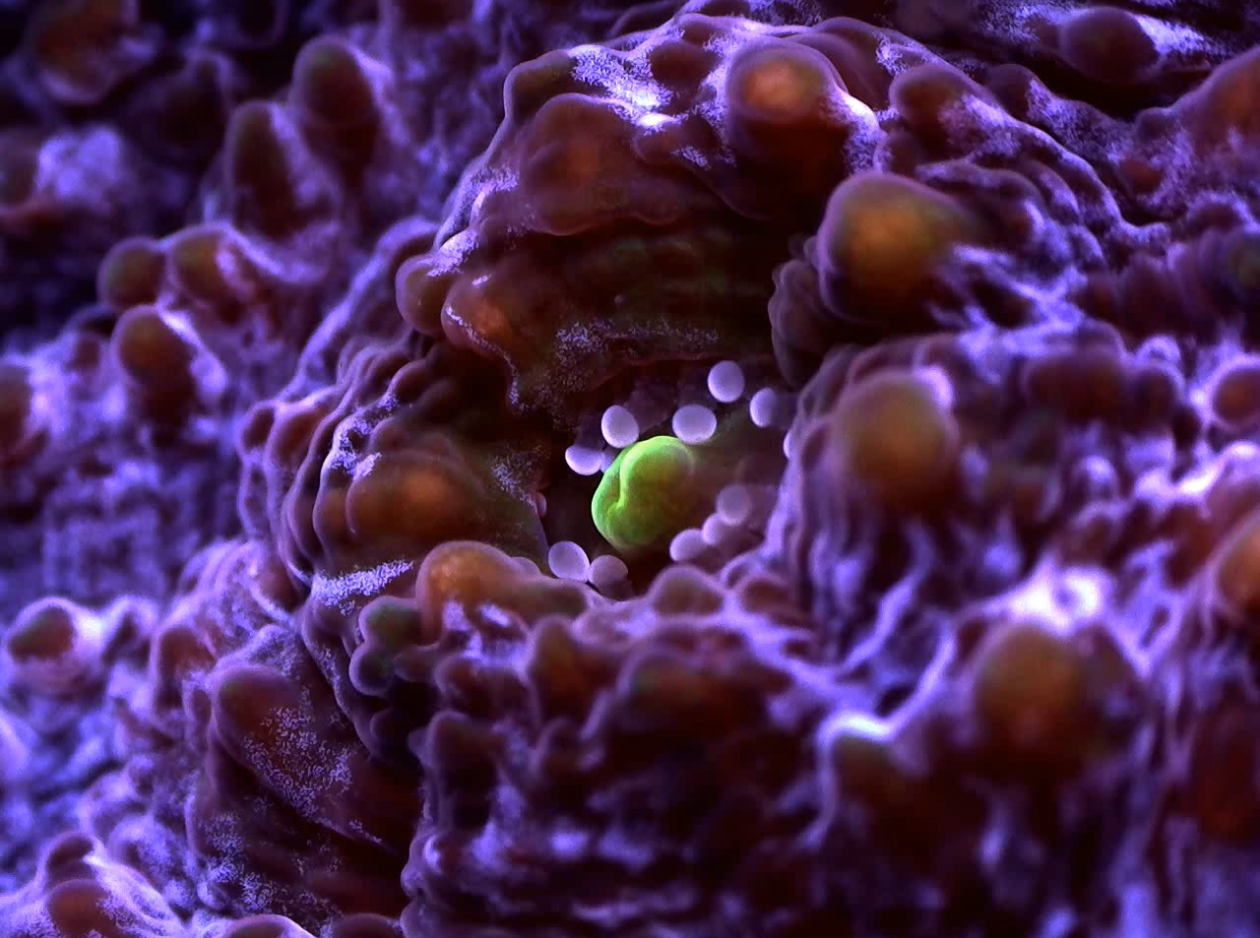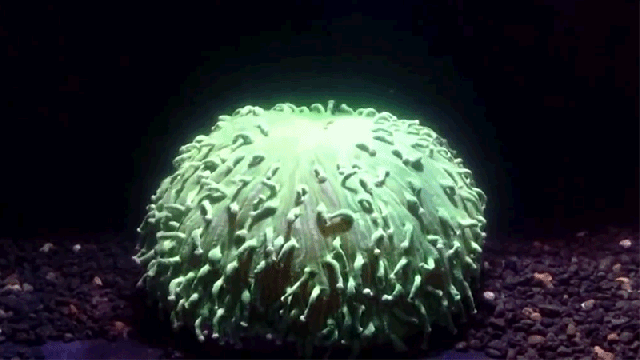Earlier this year, record warm ocean waters triggered a massive coral die off in the Great Barrier Reef, prompting a flurry of scientific research into the underlying cause. Now, for the first time, biologists have captured the process of coral bleaching as it happens, showing us how corals kill themselves in gory scientific detail.
The coral that build the colourful, tropical reefs we know and love are a complex symbiosis: A squishy animal wrapped in a crunchy limestone exoskeleton and infested with microscopic plants called zooxanthellae. This unique partnership has allowed corals to build enormous reef systems that provide habitat to roughly a quarter of all marine species. Unfortunately, the relationship is now starting to break down, in part because of a strange behaviour corals engage in when they become uncomfortably warm.

Image: Brett Lewis, QUT

Image: Brett Lewis, QUT
When the water temperature rises just a few degrees to above optimal, corals evict their zooxanthellae. This causes the animals to turn a ghostly white — hence the term “bleaching” — but more problematically it cuts off their food supply. (In exchange for shelter, zooxanthellae provide their hosts with sugars via photosynthesis.) If temperatures remain hot for too long, the algae won’t return and the coral will starve. That’s exactly what happened across the Great Barrier Reef earlier this year, in a record bleaching event that caused up to 50 per cent mortality along the reef’s northern margin.
To gain insight into how bleaching works, biologists at Queensland University of Technology placed the coral Heiiofungia actiniformis in aquaria, raised the temperature and captured time-lapse videos over the course of eight days using digital cameras and microscopes.
Like a pair of bellows belching toxic green gas, the videos show unhappy corals expelling their algal partners within hours of the temperature being raised from 26C to 32C. “What’s really interesting is just how quickly and violently the coral forcefully evicted its resident symbionts,” Brett Lewis, a co-author on the study published recently in Coral Reefs, said in a statement.

Image: Brett Lewis, QUT
But it wasn’t all doom and gloom. In fact, the researchers believe the “pulsed inflation” method H. actiniformis uses to expel its algae may help the animal survive hot spells compared with corals that do not bleach so ostentatiously. Hopefully, by continuing to examine coral under the microscope, scientists can pinpoint the mechanisms behind bleaching survival strategies, and figure out how to promote temperature resilience more widely.
Let’s hope so, because the global heat wave shows no signs of slowing down.
